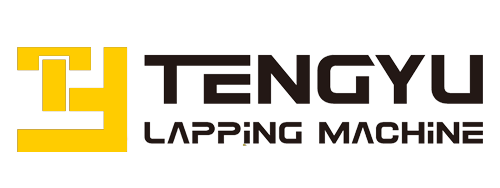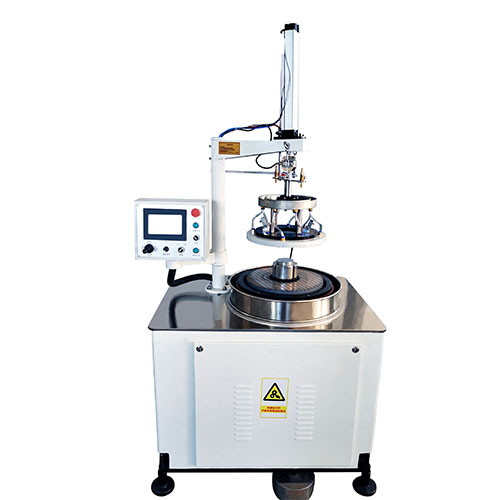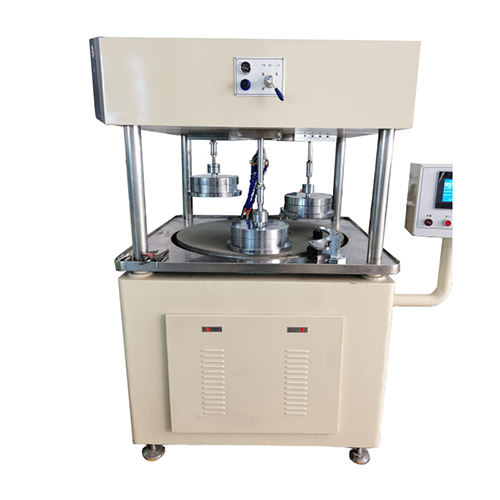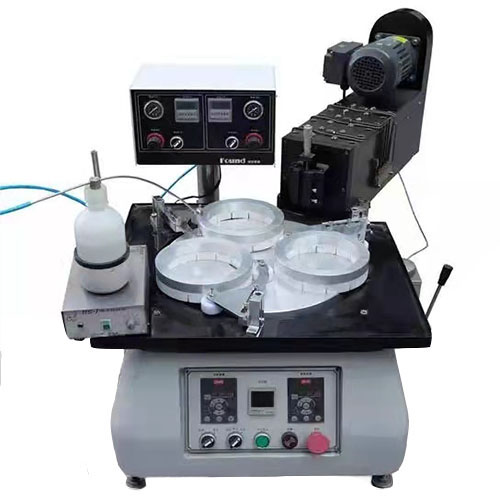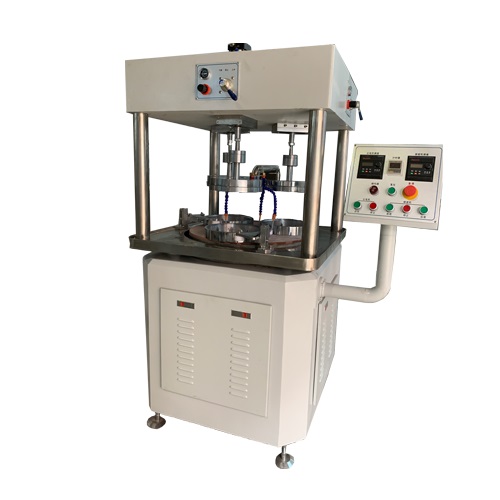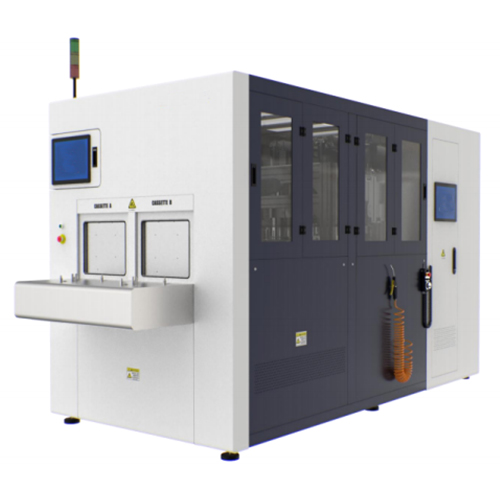Full-Auto Wafer Grinder series is the core facility specialized in wafer fabrication. Thru several years of research and study in wafer grinding, we are familiar with more than twenty kinds of grinding solutions including first to fourth generation of semiconductors. Likewise, we have knowledge of relevant processing from sawing, chamfering, (de)bonding, (de)mounting, dicing, cleaning, to quality and performance measuring what indeed helped us to recognize the joint of with other processing working applicable and reliable with our equipment.
Sample
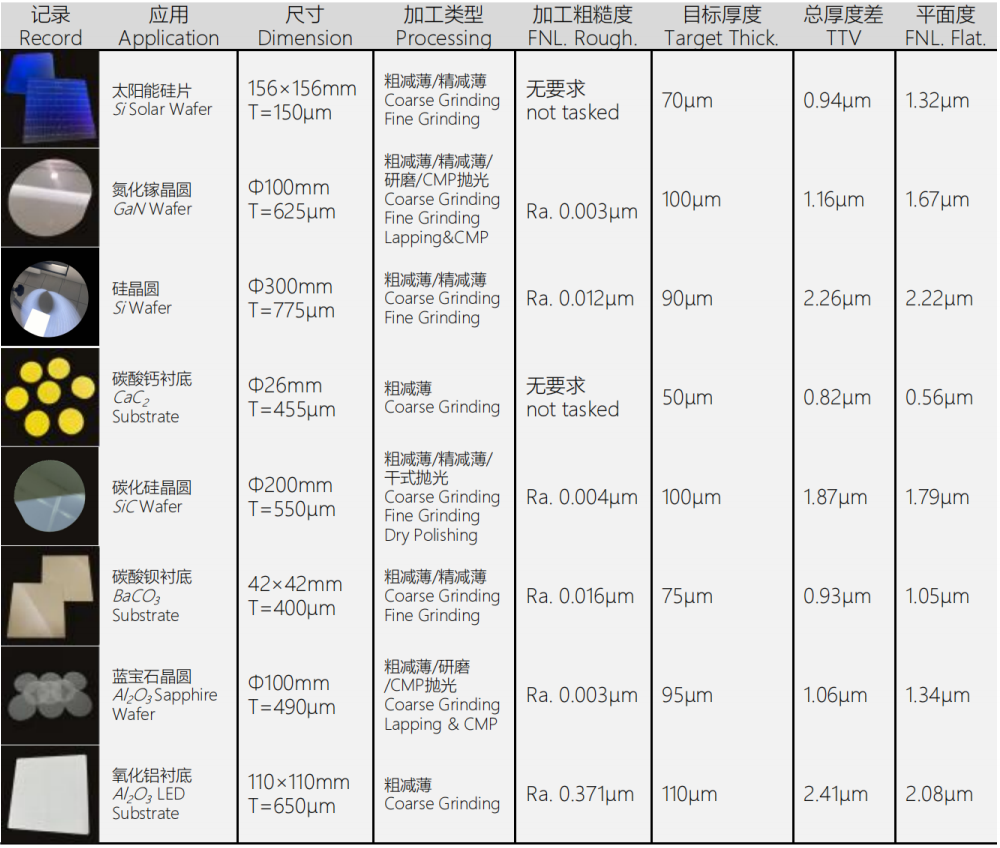
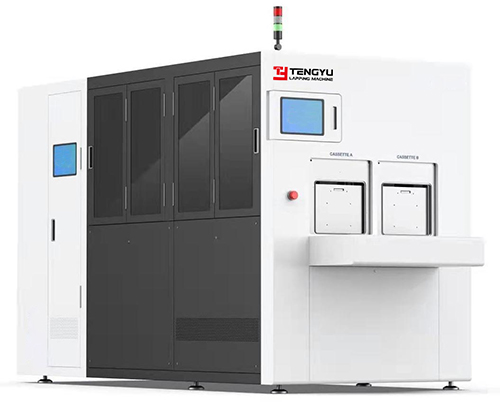
USE OF WAFER GRINDER
Wafer grinder is tasked to reduce the thickness of the targets for improvement on heat dissipation and integration density. For solar wafer, thinner silicon slice boosts absorption performance from radiant energy so to increase energizing efficiency. In addition, the full auto series is capable of dry polishing and CMP stress relief system.
The series has been developed into semi and full automatic versions as to match different scenarios of use such as laboratory and fabrication line. Ponda provides the wo rid-forefront technical configurations and solutions for all series. On this basis, moreover, the machine can be modified to accomplish specified requirements by customization.
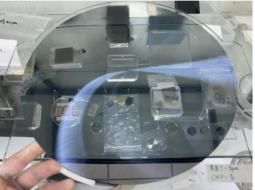
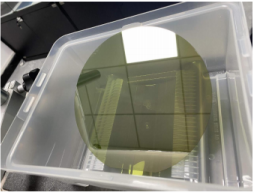
Si Wafer after Fine Grinding Sic Wafer after CMP
Technical Parameter:
ITEM
|
PRAMETER
|
Applicable Wafer Size
|
2 to 12-inch Standard Wafer
|
No. of Vacuum Table
|
3
|
Grinding Wheel Diameter
|
φ209mm/φ312 mm
|
Grinding Wheel R. Speed
|
0 - 4000 min
|
Vacuum Table R. Speed
|
0 - 300 min
|
In-Feed Grinding Speed
|
0.1 - 80um/s
|
In-Feed Resolution
|
0.1 um/s
|
Fast Traverse Speed
|
10 mm/s
|
Max. Vacuum Pressure
|
-90 KPa
|
TTV
|
< 3 nm (8inch)
|
Surface Roughness
|
Ra. 0.015 nm (SDC 2000#)
|
Total Power
|
21kw
|
External Dimension
|
1300x2770x1920 mm
|
Total Weight
|
5000kg
|
Standard configuration:
ITEM
|
DESCRIPTION
|
Aerostatic Bearing Spindle
|
Advanced ultra-precision aerostatic spindle with high-power
|
Universal Vacuum Clamp
|
Clamp applicable for more than one sized wafer vacuuming
|
Irregular Vacuum Clamp
|
Vacuum clamp applicable for irregular or square-shape substrates
|
Contact Thickness Gauge
|
Real-time probe Instrument used in coarse grinding gauging
|
Non-contact Thickness Gauge
|
Real-time infrared Instrument used in fine grinding gauging
|
Tape Mounter
|
UV/blue-tape wafer mounter, often collocates with curing system
|
LED Curing System
|
Curing UV/blue-tape mounted wafers
|
Air Compressor & Filter System
|
Provide dry-clean compressed air for aerostatic bearing spindle
|
Coolant Filter & Purifier System
|
Supply DI water coolant while grinding
|
Fab. Code Scanner
|
System used in wafer fabrication tracking
|
Configuration Map:
No.
|
Name
|
|
1
|
Aerostatic Granite Turntable
|
|
2
|
Contact Thickness Gauge
|
|
3
|
Non-Contact Thickness Gauge
|
|
4
|
Ceramic Vacuum Table
|
|
5
|
Mounting Robot (Aligner to Table)
|
|
6
|
Demounting Robot (Table to Cleaner)
|
|
7
|
Vacuum Table Cleaner
|
|
8
|
Wafer Aligner
|
|
9
|
Wafer Cleaner
|
|
10
|
Docking Robot
|
|
11
|
Automatic Cassette I/O Dock
|
12
|
15" GUI Touch Screen
|
13
|
Emergency Stop
|
14
|
Auto Lift Hatch Gate
|
15
|
Pulse Hand Wheel
|
16
|
Air/DI-Water Sprayer
|
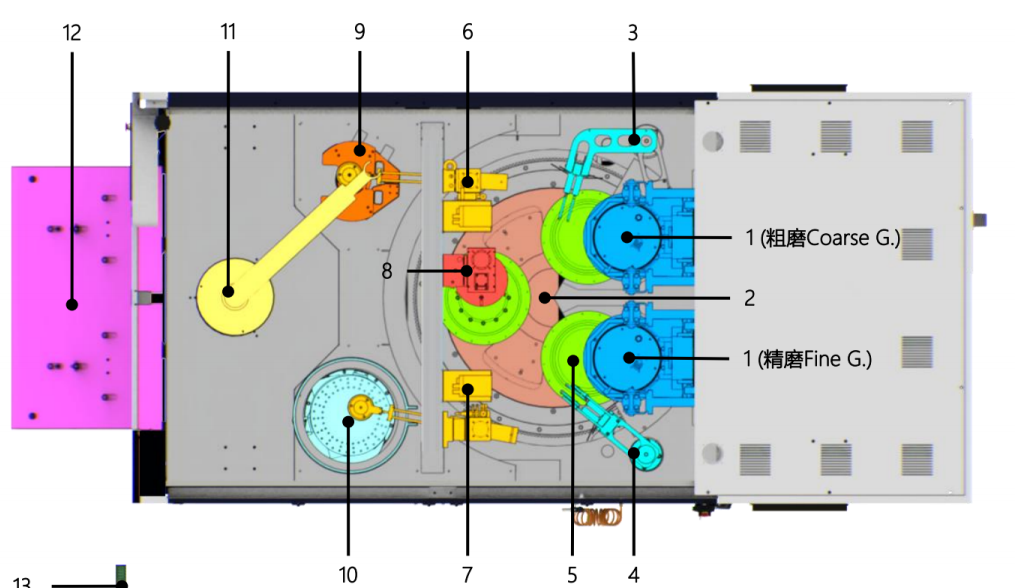
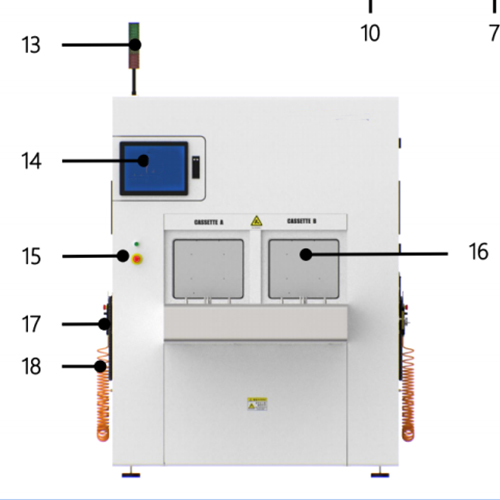
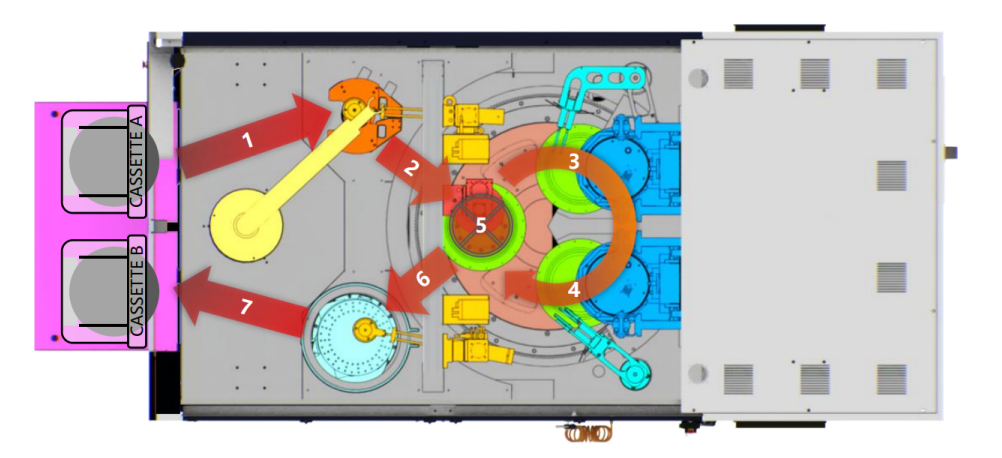
ITEM
|
DESCRIPTION
|
|
1
|
Docking grips a target wafer from cassette A & B into Wafer Aligner.
|
|
2
|
After aligning, Mounting grips the wafer into Ceramic Vacuum Table.
|
|
3
|
Until the preceding wafer finished coarse grinding, Aerostatic Granite Turntable sends the wafer into coarse grinding section by rotating by 120 degrees. Then starts coarse grinding.
|
|
4
|
Next to coarse grinding, again A.G. Turntable rotates by 120 degrees that sending the wafer into fine grinding section.
|
|
5
|
After that, A.G. Turntable rotates by 120 degrees and transports the wafer back to original section.
|
|
6
|
Demounting grips wafer into Wafer Cleaner for wafer cleaning and drying. Meanwhile, Vacuum Table Gisa^ef brush-washes the Ceramic Vacuum Table preparing for the forthcoming wafer.
|
|
7
|
Docking Robot wafer back into cassette A & B.
|
Performance Data:
ITEM
|
PRAMETER
|
Grinding Flatness(um)
|
≤2
|
TTV of Single Wafer (um)
|
≤2
|
TTV Between Wafers (um)
|
≤3
|
Min. Grinding Thickness (um)
|
50(4inch)
|
Coarse Grinding Roughness(um)
|
Ra0.5
|
Fine Grinding Roughness(um)
|
Ra0.12
|
Grinding Removal Rate(um/s)
|
2.3
|
UPH (piece)
|
25(Removal 300 um)
|
Grinding Center
The vacuum tables within auto-model grinder are carried by a large ceramic aerostatic turntable to orbit around the central axis that passing down wafers between coarse grinding, fine grinding and mounting stations in order. Meanwhile, the aerostatic bearing mechanism is able to precisely brake and grip down the turntable at a specific angle by vacuum.
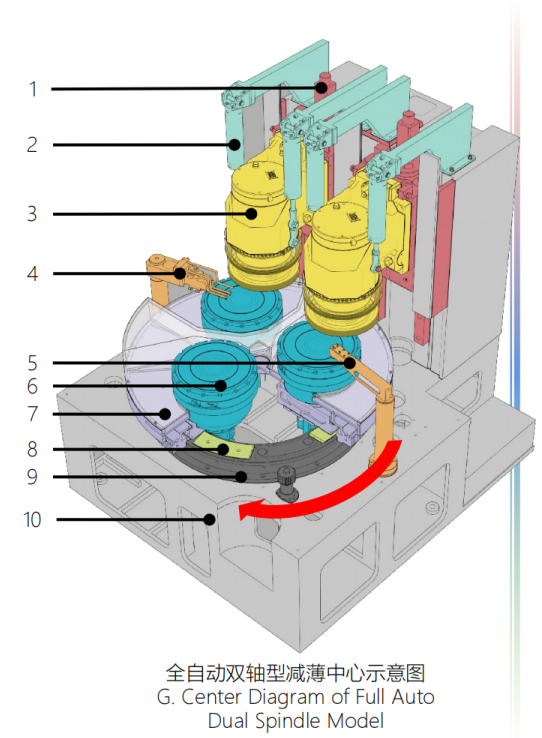
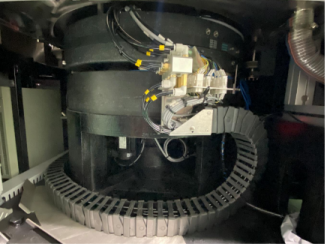
The triple-spindle model applies Stress Relief System(SRS). This system further enhances the roughness of output wafers and reduces uneven internal stress. On the other hand, it secures process yield at higher expectation. The system has two modalities that respectively are Dry Polishing(DSRS) and CMP(CSRS). Both are specialized in their own measured range of hardness, e.g. dry polishing has often been used in SiC wafers whereas CMP been used in Si.
AEROSTATIC B. SPINDLE:
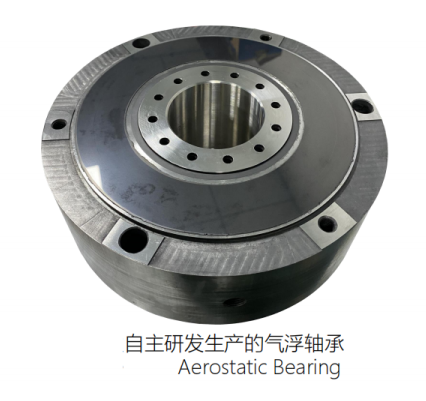
The bearing layers of aerostatic bearing are a dry- clean inter-facial air film filled within the gap between rotor shaft and stator. Instead of regular bearing, it does not have actual contact with any part of mechanism when spinning. The aerostatic bearing utilizesrigid microporous substance which has been also called "Microporous Air Bearing". Such bearing provides extraordinarily long-lasting life-time and stability of the spindle among the others thereof. Bearing spindle is able to spin at extremely low amplitude at 3000 min-1 - radial and axial pulsate are less than 1/10 micron. than 1/10 micron.
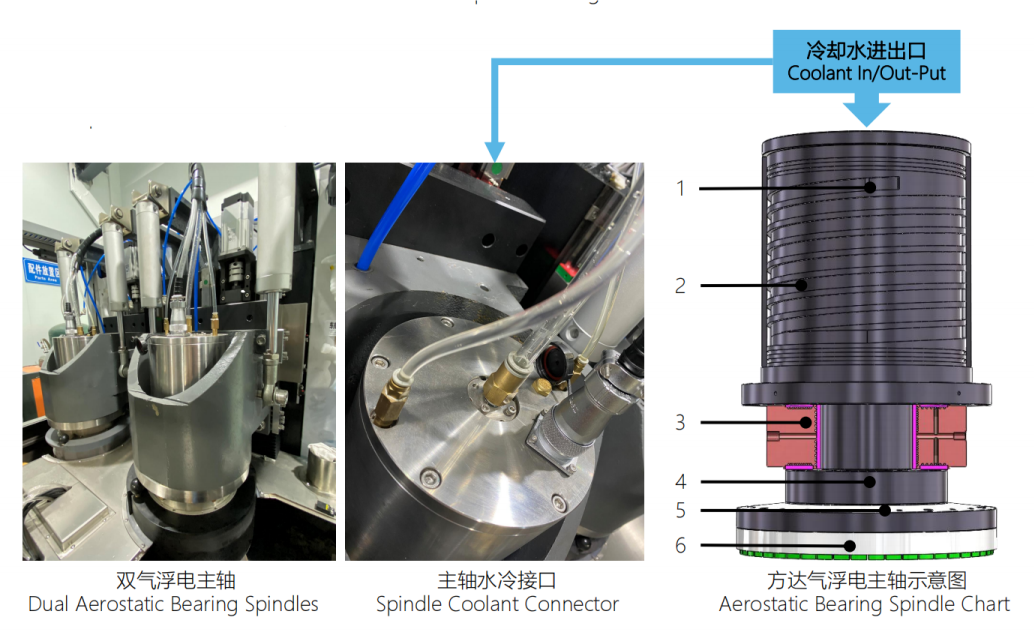
Vacuum Table:
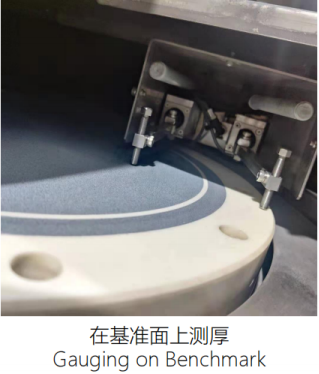
The vacuum table features auto-origin-homing due to a high-resolution servo motor. The model that applied with contact thickness gauge utilizes ceramic (AI2O3 or ZrO2) vacuum enclosure as for zeroing-point benchmark for the gauge. Otherwise it usually comes with stainless steel.
The vacuum area is optional to insert either single or universal vacuum clamp. Meanwhile, it has set blow-off function therefore to safely detach wafers also to clean up waste inside of the porous ceramic. The universal clamp can be applied from 2 to 12-inch clamp sections to adapt different diameters of wafers in one table and each section can be controlled individually. Meanwhile, we provide customized clamp for irregular-flat object as an option for choice.
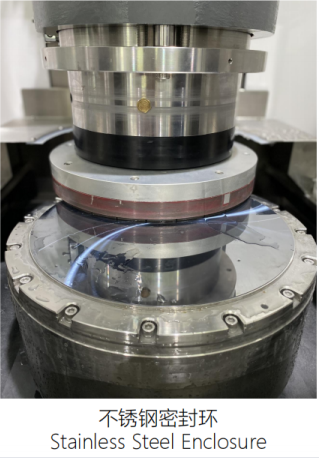
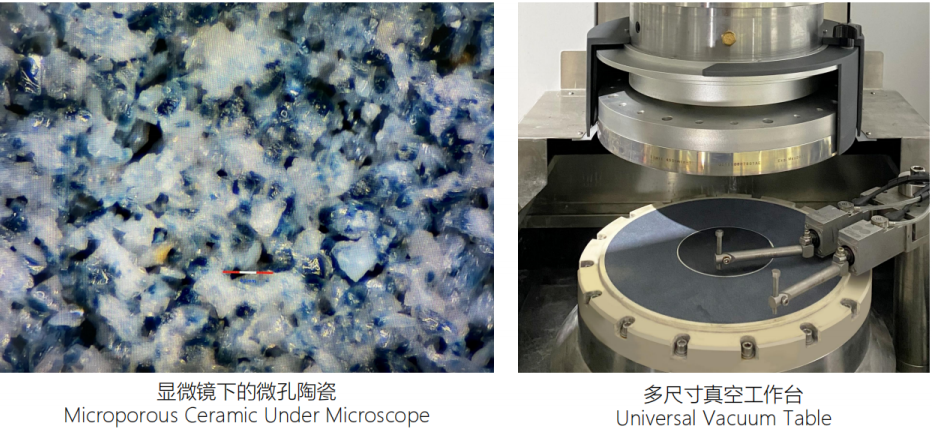
A high-precision real-time thickness gauge is one of the most significant accessories in grinder as it straightly determines the constant grinding precision. Another advantage of it is to indicate accurate offset volume to grinder on the consumption of grinding wheel.

Diagram of operation principle of gauges
MARPOSS® high-precision-resolution contact and non-contact thickness gauges as options are configured for wafers' thickness inspection in different grinding conditions. [1] Contact gauge has two precision probes respectively making constant contact with wafer and ceramic enclosure while inspecting. The variation between the both inspected tops is the thickness of wafer(or with back tape). Normally for economic concern, it has been often applied in coarse grinding as it will leave hardly-seen circular imprint which can be eliminated in fine grinding. However, the target thickness under 150- micron is not recommended to use such gauge. [2]Non-contact gauge utilizes infrared technology by gathering the volume of ray absorption, reflection and dispersion of wafer to determine the true thickness which will not account the thickness of tape. It is necessary in finish polishing and ultra-thin grinding for wafer's safety concern.
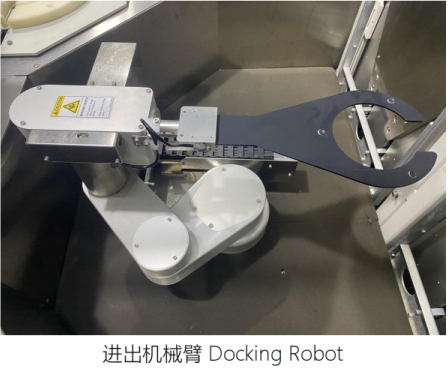
As one of the most significant transportation apparatuses, the precision and stability of vacuum robot are our primary consideration when engineering. In a focused and targeted manner, the grinder has launched multiple specifically designed arms against different transportation stages.
Docking robot, as one of major I/O instruments, utilizes JEL® four-axis model and vacuum gripper. The robot itself can locate and transport the wafer in or out from the cassette A/B under communication with the sensors on cassette I/O dock.
Mounting and demounting robots are motivated by exclusive sets of high-resolution servo motors to swing and elevate. Both robots wield full-contact ceramic vacuum grippers and respectively undertake the routes of "wafer aligner — vacuum table" and "vacuum table — wafer cleaner & spinner".
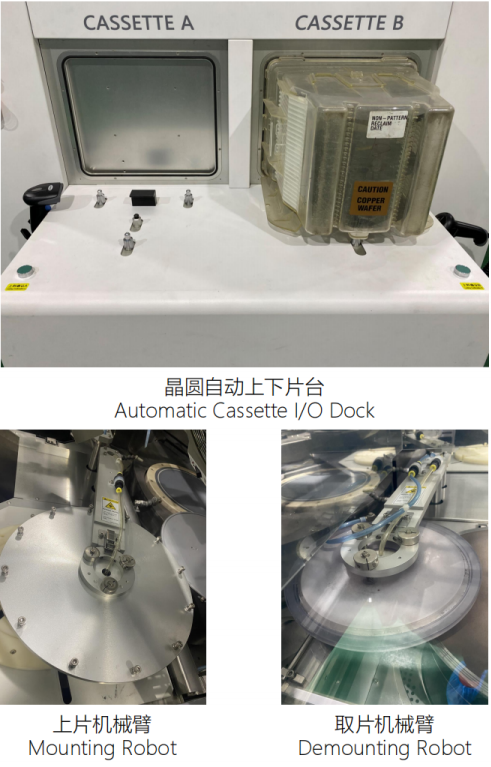
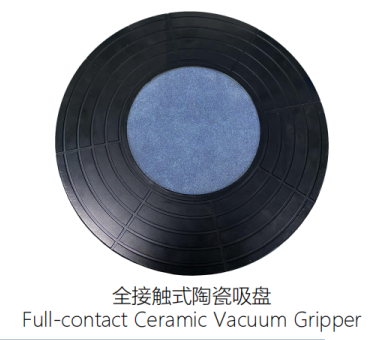
Wafer Cleaner & Spinner: washes away remaining grinding waste and dry off the wafer. In a complete progress, the spin-table clamps wafer and spins rapidly while the nozzles lift down and spray DI water. Until the waste and coolant completely flushed and spun off, the table and air nozzle spins and sprays wafer to dry.
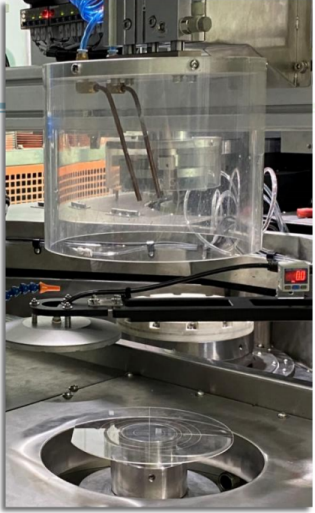
 English
English  Esperanto
Esperanto  Беларус
Беларус  Shqiptar
Shqiptar  lugha ya Kiswahili
lugha ya Kiswahili  Bosanski
Bosanski  ជនជាតិខ្មែរ
ជនជាតិខ្មែរ  Кыргыз тили
Кыргыз тили  Монгол хэл
Монгол хэл  IsiXhosa
IsiXhosa  Точик
Точик  O'zbek
O'zbek  հայերեն
հայերեն  Sundanese
Sundanese  Español
Español  Português
Português  русский
русский  français
français  日本語
日本語  Deutsch
Deutsch  Tiếng Việt
Tiếng Việt  Italiano
Italiano  Nederlands
Nederlands  ไทย
ไทย  Polski
Polski  한국어
한국어  Svenska
Svenska  Malay
Malay  বাংলা
বাংলা  हिन्दी
हिन्दी  Pilipino
Pilipino  Türk
Türk  عربى
عربى  Indonesia
Indonesia  اردو
اردو  Ελληνικά
Ελληνικά  Українська
Українська  Javanese
Javanese  فارسی
فارسی  తెలుగు
తెలుగు  Burmese
Burmese  български
български  ລາວ
ລາວ  Latine
Latine  Қазақ
Қазақ  Euskal
Euskal  Azərbaycan
Azərbaycan  slovenský
slovenský  Српски
Српски  Română
Română 